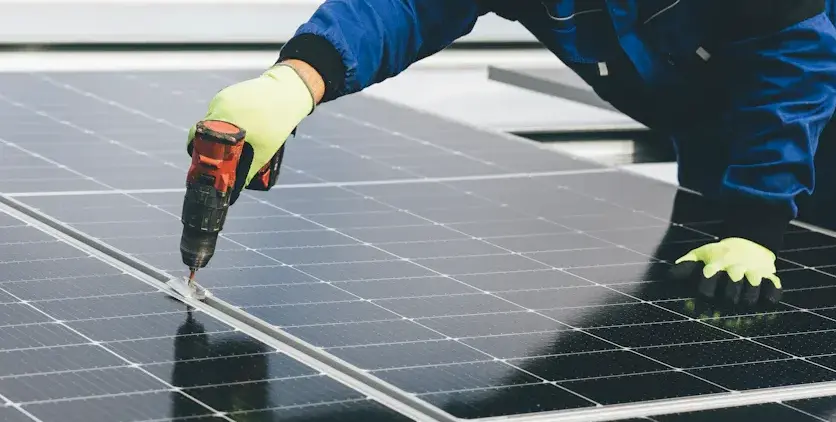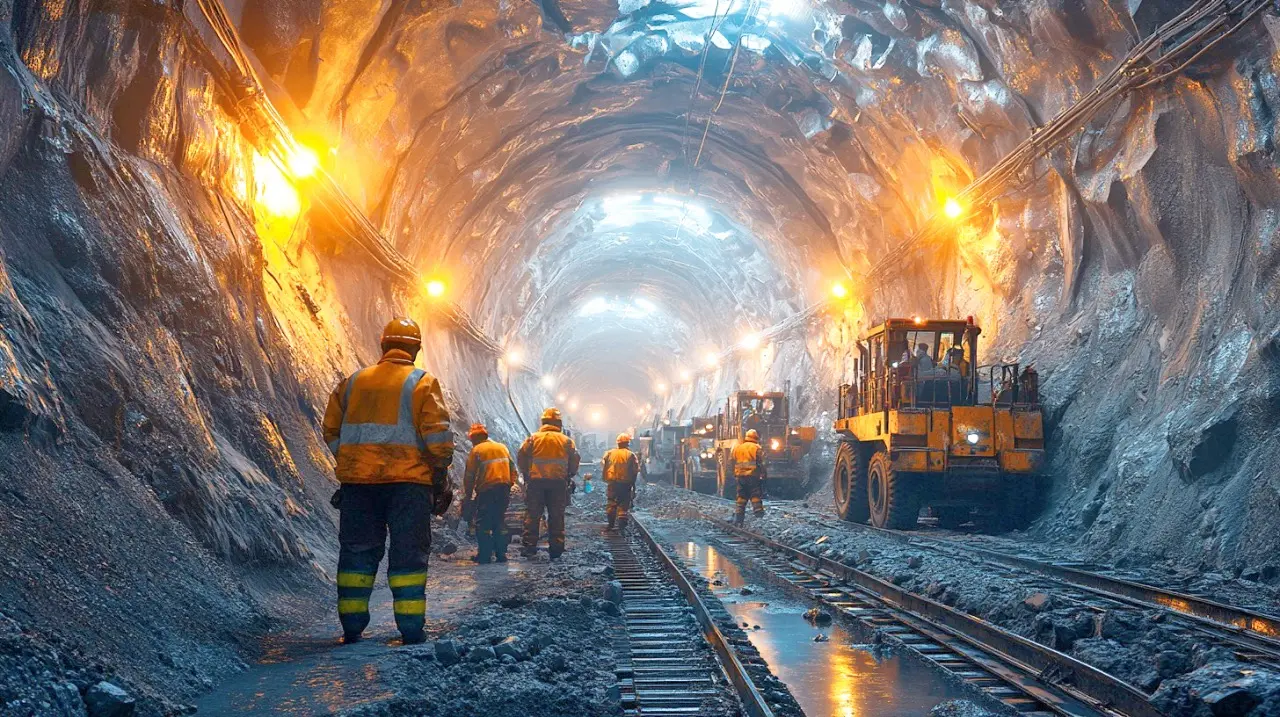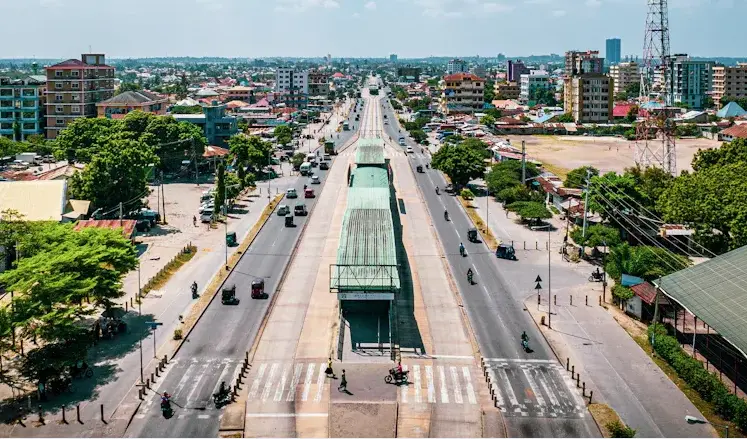Never Overlook Africa’s Infrastructure Investment Potential
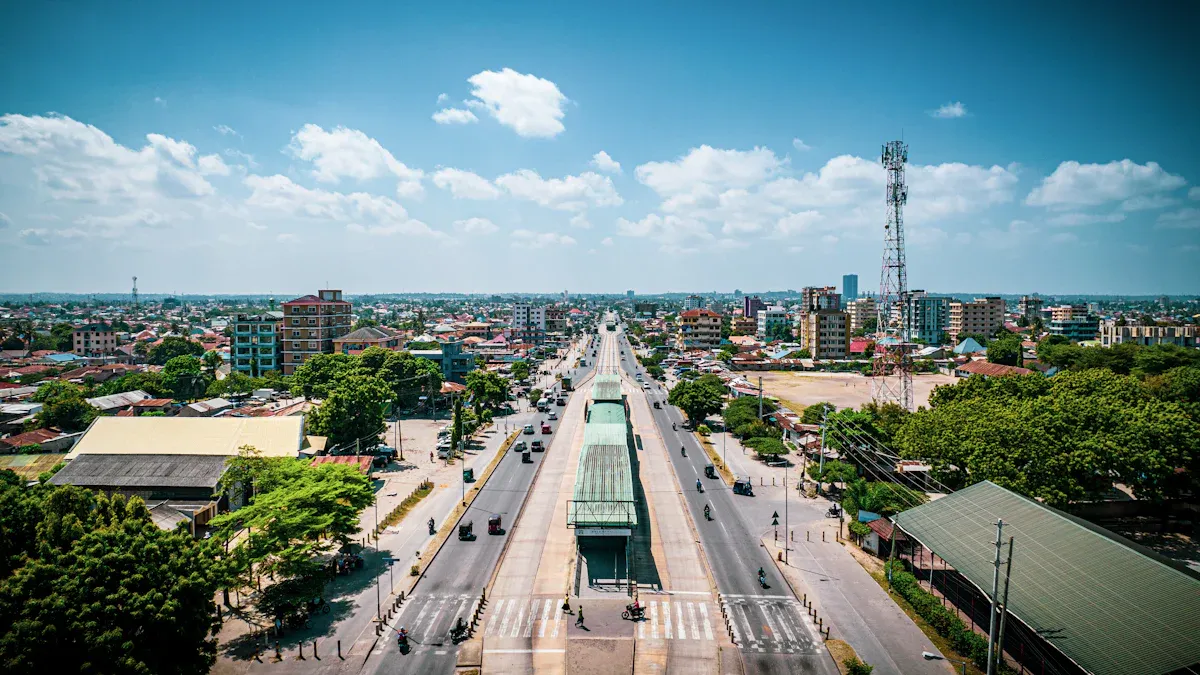
Africa’s infrastructure investments in emerging markets (Africa) present immense opportunities. Rapid urbanization is reshaping the continent, with the urban population expected to triple by 2050, adding 800 million people. Cities face higher living costs, with residents paying 55% more for housing and 42% more for transport. Enhanced internet connectivity has also driven a 10% rise in foreign direct investment projects, highlighting the transformative potential of strategic infrastructure development.
Key Takeaways
- Africa's city population will triple by 2050. This means cities need more infrastructure to handle growth.
- Using renewable energy can fill energy needs, cut fossil fuel use, and make green jobs.
- Better transportation can boost trade, lower costs, and link rural areas to key services.
Current State of Infrastructure in Africa
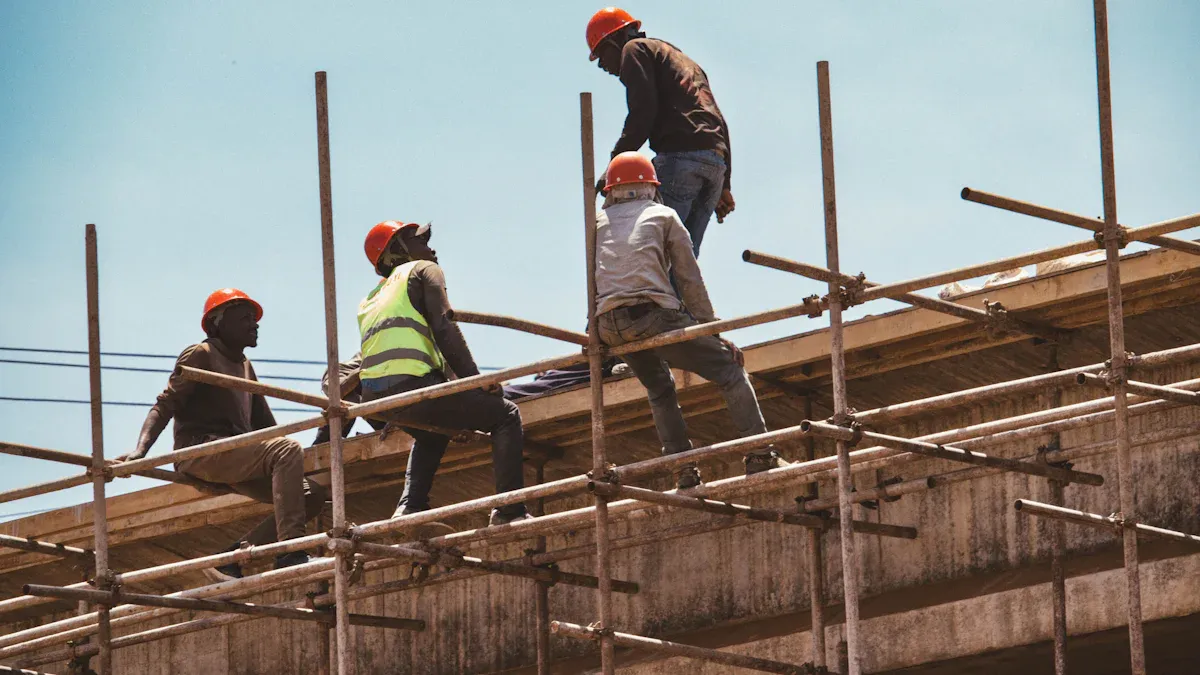
The Infrastructure Gap and Its Scale
Africa faces a significant infrastructure gap that hinders its economic potential. Despite progress, the continent requires substantial investments to meet growing demands. For instance, Africa added over 6.5 GW of utility-scale energy capacity in 2024. However, experts estimate that annual energy buildouts must double or triple to address the continent's needs. Transportation infrastructure also lags behind, with many regions relying on outdated systems. Projects like the Lobito Corridor, which connects mineral-rich areas to ports, highlight the potential of targeted investments to unlock economic opportunities.
Digital infrastructure presents a mixed picture. The arrival of advanced subsea cables has improved bandwidth potential, yet rural areas still face significant connectivity challenges. These gaps underscore the need for strategic infrastructure investments in emerging markets (Africa) to bridge disparities and support sustainable growth.
| Sector | Current Status |
|---|---|
| Energy | In 2024, Africa added over 6.5 GW of utility-scale capacity to its grid, needing to double or triple its annual energy buildout. |
| Transport | Railway investment is increasing, with projects like the Lobito Corridor unlocking mineral wealth and supporting trade. |
| Digital | The landing of ultra-modern subsea cables is enhancing bandwidth potential, but connectivity gaps remain, especially in rural areas. |
Economic Impacts of Infrastructure Deficiencies
Infrastructure deficiencies impose significant economic costs on Africa. Limited access to reliable energy disrupts industrial productivity and deters foreign investment. Transportation bottlenecks increase the cost of moving goods, reducing competitiveness in global markets. For example, inadequate rail and road networks often delay the export of minerals and agricultural products, leading to revenue losses.
Digital infrastructure gaps further exacerbate inequality. Rural communities, in particular, struggle to access online education, healthcare, and financial services. This digital divide stifles innovation and limits opportunities for millions. Addressing these deficiencies through targeted investments can unlock Africa’s economic potential, fostering inclusive growth and regional integration.
Infrastructure Investments in Emerging Markets (Africa): Opportunities
Energy Sector: Powering Growth
Africa’s energy sector holds immense potential for infrastructure investments in emerging markets (Africa). The continent’s energy demand continues to rise, driven by population growth and industrialization. However, many regions still face energy deficits, with millions lacking access to reliable electricity. Investments in renewable energy, such as solar and wind, offer a sustainable solution to bridge this gap.
The UPBEAT data platform provides valuable insights into utility performance across Sub-Saharan Africa. It tracks over 60 indicators, including financial and operational metrics, across 45 countries. This data highlights areas where energy infrastructure can be improved to enhance efficiency and transparency. Additionally, the PV-DEI index evaluates decentralized energy investments, offering stakeholders a detailed understanding of country-specific opportunities. These tools enable investors to make informed decisions and target high-impact projects.
Renewable energy projects, such as solar farms in Kenya and wind power initiatives in South Africa, demonstrate the sector’s transformative potential. By prioritizing clean energy, Africa can reduce its reliance on fossil fuels, lower carbon emissions, and create jobs in green industries.
Transportation and Logistics: Connecting Economies
Efficient transportation networks are vital for economic growth and regional integration. Africa’s transportation infrastructure, however, remains underdeveloped in many areas. Investments in roads, railways, and ports can significantly enhance trade and connectivity across the continent.
The modernization of the Dakar-Lagos corridor exemplifies the economic benefits of transportation infrastructure. This project is projected to yield a benefit-cost ratio of around 3, showcasing its potential for high returns. Investments in road infrastructure, coupled with reforms to reduce border delays, have also facilitated trade among African nations. For instance, a $470-million initiative aims to promote economic opportunities in Burkina Faso, Niger, and Togo by improving regional connectivity.
Improved transportation networks reduce the cost of moving goods, making African products more competitive in global markets. They also enable better access to essential services, such as healthcare and education, for rural communities. By addressing these infrastructure gaps, Africa can unlock its economic potential and foster inclusive growth.
| Evidence Type | Description |
|---|---|
| Economic Impact | The modernization of the Dakar-Lagos corridor is projected to yield a benefit-cost ratio of around 3. |
| Trade Facilitation | Investments in road infrastructure are coupled with reforms to reduce border delays, enhancing trade among African nations. |
| Regional Integration | Projects like the $470-million initiative aim to promote economic opportunities in Burkina Faso, Niger, and Togo. |
Technology and Digital Infrastructure: Bridging the Digital Divide
Digital infrastructure is a cornerstone of modern economies, yet many African countries face significant connectivity challenges. Investments in this sector can drive innovation, improve access to services, and reduce inequality.
Research shows that increasing ICT infrastructure investment leads to inclusive growth, with GDP gains ranging from 0.4% to 0.7%. These benefits are particularly pronounced in rural areas, where connectivity gaps are most severe. The arrival of advanced subsea cables has already enhanced bandwidth potential, but further investments are needed to extend these benefits to underserved regions.
Digital infrastructure also supports the growth of Africa’s tech ecosystem. Countries like Kenya and Nigeria are emerging as hubs for innovation, attracting startups and venture capital. By investing in digital connectivity, Africa can position itself as a leader in the global digital economy.
Tip: Prioritizing rural connectivity can maximize growth potential and ensure that the benefits of digital infrastructure are widely shared.
Regional Hotspots for High-Growth Potential
Certain regions in Africa stand out as hotspots for infrastructure investments in emerging markets (Africa). These areas offer unique opportunities for growth, driven by factors such as governance, population dynamics, and economic size.
| Country | Leapfrog Strengths | Opportunities for Growth |
|---|---|---|
| Kenya | High digital momentum | Growing tech ecosystem |
| South Africa | Strong governance | Advanced infrastructure |
| Rwanda | Young population | Rapid digital adoption |
| Egypt | Economic size | Emerging markets |
| Nigeria | Large population | Expanding digital jobs |
| Ethiopia | Improving governance | Investment in tech |
Africa is projected to be the second-fastest-growing region globally, with an annual growth rate of 4.3% according to the African Development Bank. East Africa, in particular, is expected to lead this growth, driven by its dynamic economies and young workforce. Investors can capitalize on these trends by targeting high-growth regions and sectors.
Challenges and Risks in African Infrastructure Investments
Political and Regulatory Uncertainty
Political risk remains a critical factor in African infrastructure investments. AON reported that 60% of global economies faced heightened political risk in 2021, and Africa is no exception. Political instability can disrupt projects, deter investors, and increase costs. For example, in 2022, an African infrastructure project lost financing from a multilateral bank due to a politically exposed person acquiring ownership interest. Such incidents highlight the integrity risks tied to political exposure.
Regulatory frameworks also play a pivotal role in mitigating risks. Kenya’s PPP Act of 2021 mandates due diligence assessments for privately initiated proposals, including evaluations of integrity and reputational risks. This reflects a broader trend in Africa toward stricter anti-corruption regulations. While these measures aim to attract investors, inconsistent enforcement across countries creates uncertainty. Political risk impacts all phases of infrastructure development, from planning to execution, underscoring the need for robust governance structures.
Financing and Funding Barriers
Africa faces significant financial hurdles in meeting its infrastructure needs. Annual investment requirements range between USD 130–170 billion, yet the financing gap remains substantial at USD 68–108 billion. Excessive public debt further complicates funding efforts, leading to macroeconomic crises and limiting microeconomic stability.
| Statistic Description | Value |
|---|---|
| Annual infrastructure investment needs | USD 130–170 billion |
| Financing gap | USD 68–108 billion |
| Impact of public debt on financing | Macroeconomic crises |
High borrowing costs and local currency challenges exacerbate the issue, reducing the viability of projects. Despite stabilized public debt ratios and reduced inflation, funding shortages persist. Africa receives only a fraction of global climate finance flows, hindering its ability to adapt to climate change and invest in clean energy. With only 2% of global clean energy investments directed to Africa, the continent struggles to leverage its vast renewable energy potential.
Social and Environmental Considerations
Infrastructure development in Africa carries both social and environmental implications. While projects can enhance environmental sustainability by reducing greenhouse gas emissions, weaker environmental governance in some countries amplifies negative impacts. Nations with higher Human Development Index (HDI) scores experience 28% fewer environmental challenges, highlighting the importance of development status in managing infrastructure projects.
- Infrastructure improves environmental quality by lowering CO2 emissions across fuel consumption states.
- Transport, energy, water supply, and technology sectors contribute to sustainability.
- The knowledge economy mediates the relationship between infrastructure and environmental outcomes, promoting emission reductions.
Socioeconomic impacts also vary. Road infrastructure in Sub-Saharan Africa has improved connectivity but has led to environmental degradation in areas with weaker governance. Balancing development with environmental protection requires stronger policies and community engagement.
Note: Prioritizing projects with robust environmental governance can minimize negative impacts and foster sustainable growth.
Success Stories and Case Studies
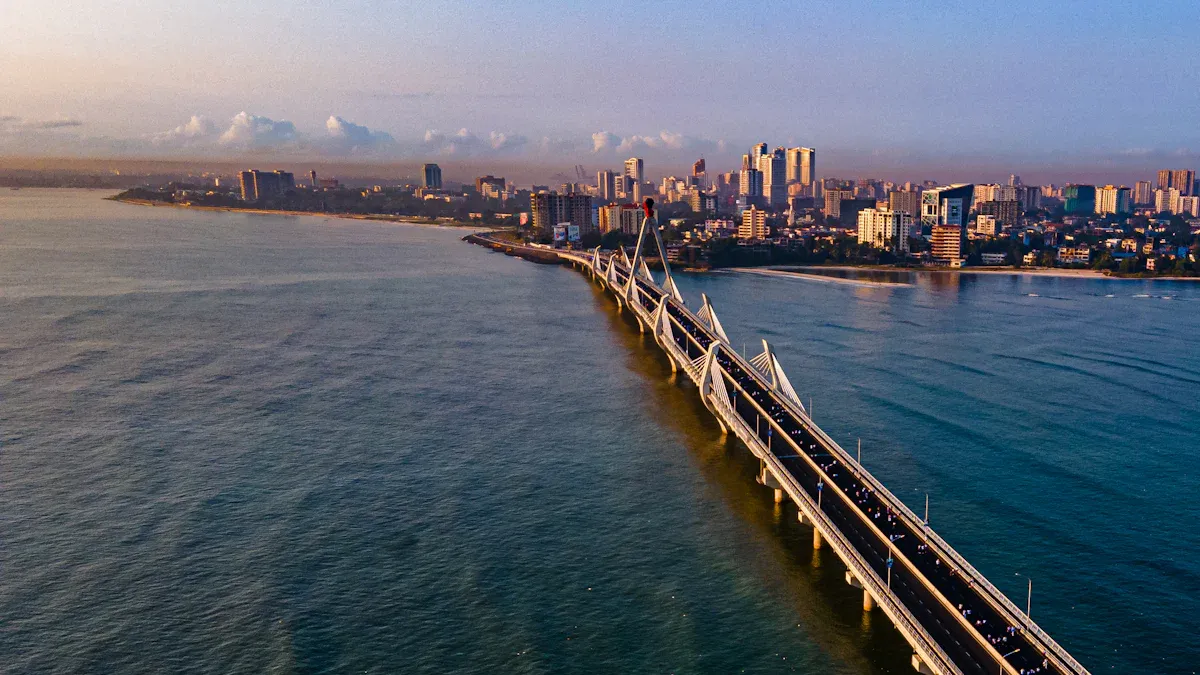
Renewable Energy Projects Transforming Communities
Renewable energy projects in Africa have significantly improved electricity access, driving economic growth and community development. Ethiopia exemplifies this transformation. The country increased its electricity generation capacity from 2.8 GW to over 4.6 GW, surpassing targets outlined in its Growth and Transformation Plan. This expansion has fueled industrial growth, with Hawassa Industrial Park contributing over $500 million in exports annually.
The impact extends beyond economic metrics. Meridian Industrial Park in Ghana has created approximately 7,000 jobs, demonstrating how renewable energy access supports employment. Revenue-sharing agreements and community development funds further ensure that local populations benefit directly from these initiatives. Meaningful engagement with communities throughout the energy transition process has also fostered trust and long-term sustainability.
| Performance Indicator | Description |
|---|---|
| Electricity Generation Capacity | Increased from 2.8 GW to over 4.6 GW in Ethiopia, exceeding targets set in the Growth and Transformation Plan. |
| Economic Growth | The establishment of industrial parks, such as Hawassa Industrial Park, contributing over $500 million in exports. |
| Job Creation | Meridian Industrial Park in Ghana supports around 7,000 jobs, showcasing the employment impact of increased electricity access. |
Transportation Infrastructure Driving Regional Trade
Transportation infrastructure plays a pivotal role in boosting regional trade across Africa. However, intra-African trade remains low at 12%, compared to 60% in Europe and 40% in Asia. Lengthy and expensive processes for transporting goods, insufficient road and rail networks, and prohibitive border crossing times hinder trade efficiency.
Investments in road infrastructure, paired with reduced border delays, could unlock significant economic gains. For instance, the modernization of the Dakar-Lagos corridor enhances integration between major coastal economies and connects internal markets to larger economies like Nigeria, Ghana, and the Ivory Coast. This project has the potential to double economic benefits by improving trade flows and reducing transportation costs.
| Region | Trade Percentage |
|---|---|
| Africa | 12% |
| Europe | 60% |
| Asia | 40% |
Digital Connectivity Initiatives Boosting Innovation
Digital connectivity initiatives have transformed Africa’s digital landscape, fostering innovation and economic growth. Access to broadband internet increased from 26% in 2019 to 36% in 2022, reflecting the success of investments in digital infrastructure. Citizen portals have enhanced trust and transparency, while collaborative efforts among governments, civil society, and the private sector have driven progress.
Digital Public Infrastructure (DPI) investments are critical for leveraging the digital economy. These initiatives improve essential services and promote digital literacy, cybersecurity, and innovation. Countries like Kenya and Nigeria have emerged as tech hubs, attracting startups and venture capital. By prioritizing connectivity, Africa can position itself as a leader in the global digital economy.
| Metric | 2019 | 2022 |
|---|---|---|
| Access to broadband internet | 26% | 36% |
Tip: Collaborative action among stakeholders ensures that digital connectivity initiatives achieve maximum impact, fostering inclusive growth across the continent.
Strategies for Investors in Africa
Mitigating Political and Regulatory Risks
Political and regulatory risks pose significant challenges for infrastructure investments in emerging markets (Africa). Investors can adopt proactive strategies to navigate these uncertainties effectively:
- Conduct thorough risk analysis of local infrastructure projects to identify vulnerabilities.
- Build relationships with local partners to gain insights into the political landscape and market dynamics.
- Utilize local banks to mitigate financial and political risks.
- Obtain political risk insurance to safeguard assets against unforeseen disruptions.
- Stay informed on global issues to anticipate potential risks.
Investors can also reduce preventable political risks by increasing the levelized cost of electrification by 4%, which has been shown to lower such risks by 50%. Transitioning to domestic Solar Energy enhances national energy sovereignty, reducing reliance on politically unstable regions. These measures ensure that investments remain resilient in volatile environments.
Tip: Collaborating with local stakeholders and leveraging risk mitigation tools can significantly enhance project stability and long-term success.
Leveraging Public-Private Partnerships (PPPs)
Public-private partnerships (PPPs) offer a proven model for advancing infrastructure projects in Africa. These collaborations combine public sector oversight with private sector expertise, mobilizing resources to bridge the continent’s infrastructure gap.
- The Lesotho healthcare PPP serves as a model for healthcare delivery, though challenges like cost overruns highlight the need for robust governance.
- Zimbabwe National Roads Administration’s partnership with Group Five improved road completion rates and reduced costs, showcasing the potential of PPPs in transportation infrastructure.
- Dr. Robert Lisinge emphasizes that PPPs are essential for addressing Africa’s annual infrastructure financing gap of $68 to $108 billion.
Despite their potential, Africa accounts for only 7% of global PPP investments, indicating room for growth. Successful partnerships require clear governance frameworks, transparent operations, and equitable risk-sharing mechanisms. By fostering trust and accountability, PPPs can unlock significant economic benefits and drive sustainable development.
Accessing Development Finance and Global Funding Mechanisms
Development finance and global funding mechanisms play a critical role in addressing Africa’s infrastructure financing gap. Over the past 25 years, reforms and investments have enabled some African countries to achieve economic growth rates above the global average. However, 36 nations face annual financing gaps of at least 10% of projected GDP, with nine countries experiencing gaps exceeding 50%.
To close the $402.2 billion annual financing gap by 2030, targeted investments are required in transport (72.9%), education (10.4%), energy (9.9%), and productivity-enhancing technologies (6.8%). Debt service payments, which account for 11% of total revenues, further constrain resources for essential infrastructure projects.
Global funding mechanisms, such as climate finance initiatives, can help Africa leverage its renewable energy potential. By aligning investments with sustainable development goals, investors can address critical infrastructure needs while promoting environmental sustainability.
Note: Prioritizing sectors with high growth potential, such as transport and energy, ensures maximum impact from development finance initiatives.
Building Local Partnerships for Sustainable Growth
Local partnerships are vital for fostering sustainable infrastructure growth in Africa. These collaborations enable investors to align projects with community needs, ensuring long-term benefits. Metrics such as accountability, transparency, and job creation help measure the impact of these partnerships.
| Metric | Description |
|---|---|
| Accountability | Ensures that all stakeholders are responsible for their actions in the partnership. |
| Transparency | Promotes openness in operations and decision-making processes. |
| Job Creation | Generates employment opportunities through infrastructure projects. |
| Economic Development | Stimulates local economies by improving infrastructure and services. |
| Sustainability Initiatives | Encourages environmentally friendly practices in infrastructure development. |
Infrastructure investors increasingly align their Environmental, Social, and Governance (ESG) performance metrics with Sustainable Development Goals (SDGs). This alignment enables them to assess the effectiveness of local partnerships in driving sustainable growth. By prioritizing community engagement and environmental stewardship, investors can create infrastructure projects that deliver economic, social, and environmental benefits.
Africa offers immense opportunities for infrastructure investments across energy, transportation, and technology sectors. Strategic planning and innovative financing mechanisms can address existing challenges. Investors who adopt a forward-looking approach will unlock untapped markets and drive sustainable development.
Key Insight: Africa’s infrastructure growth not only promises high returns but also fosters long-term economic and social transformation.
Weiye Corp., a global manufacturer dedicated to providing a variety of products for the development of Africa
As a trusted manufacturer and supplier of high-quality fasteners and metal
components, [Your Company Name] is committed to supporting Africa’s booming
infrastructure development in power, mining, energy, and construction sectors.
With our own state-of-the-art factory, we specialize in producing:
✔ Durable fasteners (bolts, nuts, washers, anchors) for heavy-duty applications
✔ Custom metal parts engineered to withstand extreme conditions
✔ ISO-certified solutions compliant with international standards (ASTM, DIN, etc.)
FAQ
What makes Africa a promising destination for infrastructure investments?
Africa’s rapid urbanization, economic growth, and untapped markets create high-return opportunities in energy, transportation, and technology sectors.
How can investors mitigate risks in African infrastructure projects?
Investors can mitigate risks by conducting due diligence, leveraging political risk insurance, and collaborating with local stakeholders for insights and stability.
Which sectors offer the highest growth potential for infrastructure investments in Africa?
Energy, transportation, and digital technology sectors provide the most promising opportunities, driven by increasing demand and regional integration initiatives.



